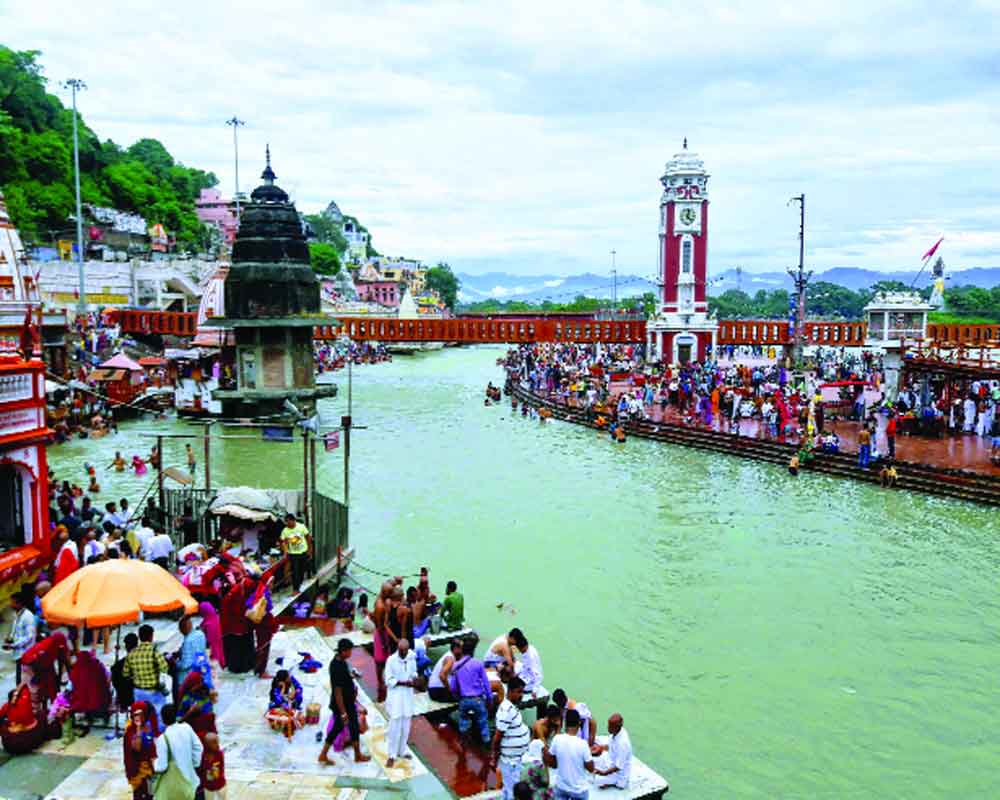Most of the rivers in India are severely polluted
Water is a primaeval element that sustains life, the elixir of life as Sir C.V. Raman called it. It must be treated with utmost caution and regard. Globally, it is getting scarce. At places it is dearer than gold, pricier than petrol. About 70 percent of Earth’s surface is water. Yet97 percent is salty and just one percent fit for ready human consumption. Eighty per cent of water supplies for human and agricultural use are sourced from groundwater. Increasing exploitation of groundwater is lowering of groundwater levels in most regions besides creating soil salinity. Daily discharge of some two million tonnes of toxic industrial effluents, garbage and farm wastes further degeneratesgroundwater quality. Technology to make the filthiest water fit and safe exists but is too costly. Rain water is an excellent source of potable water but its erratic and unreliable availabilityrenders it unmanageable. So, all eyes are set on rivers to meet varied human needs. Recognising the seminal role of rivers in growth of civilisations, agriculture, transportation, hydro electricity generation and economic growth, the International Day of Action for Rivers on March 14 was established to raise awareness about protection of rivers and prevent water contamination. The Jal Shakti Ministry focuses on the revival and conservation of wetlands in the river basins and tackling the alarming levels of river pollution. Had there been no tampering with the flowing waters, our urban and rural settlements may not have suffered river pollution and potable water crunch. Most rivers in India are severely polluted, some looking like dirty canals. The Thames in London, the cleanest as of now,is an example worth emulating. Till fifty years ago it was much polluted and declared ‘biologically dead’. Butit was cleaned and revived.
Indian farming conditions are characteristically marred by droughts and floods. In this context, theproject on interlinking of rivers and canals, is critical. Once implemented, the excessive water of monsoon months shall be diverted to water-deficit regions and also help bring in larger areas under farming and irrigation, provide build-up of waterways for transport and accelerate installation of multipurpose river projects and generate additional employment. Sadly, the nation’s river water distribution scene is plagued by inter-state disputes: Krishna, Cavery, Satluj, Beas, Ravi, Tungabhadra, Godavari, Narmada, Mahi, Yamuna, Karmansa, and so on. Tribunals established to settle the riparian State disputes on sharing of waters could not resolve the conflicts. The conflict is about a riparian state’s reluctance to part with water that could be spared to quench the thirst of millions in aneighbouring State. Abroad, the interlinking of Rhine-Danube canal, Illinois waterway, Tennessee-Tomigbee waterway, Gulf Intracoastal waterway and Dian Zhong Water Diversion Project have demonstrated that the networks created ushered in multifold benefits. At home, on the proposed river linking projects related to Krishna, Pennar and Cauvery, the Karnataka chief minister bluntly declared recently to take all steps to get the State’s share of water, and not compromise. Similar sentiment has been conveyed by Telangana over Godavari waters.Then, we have another view strongly espoused by ‘Waterman of India’ Rajendra Singh against linking of rivers pleading not to divert the free flow of rivers, the veins and arteries of earth. True, changing the courses of rivers can disturb the ecology of water creatures yet considering the overall long-term advantages justifies the waterways linking project. Rajendra Singh also opposes erection of hydro-electricity plants as the power thus produced costs Rs. 19 per unit as against solar power at Rs 3.60, making it clear which of the two should be promoted.
(The writer is a blogger and a senior journalist. The views expressed are personal.)
























